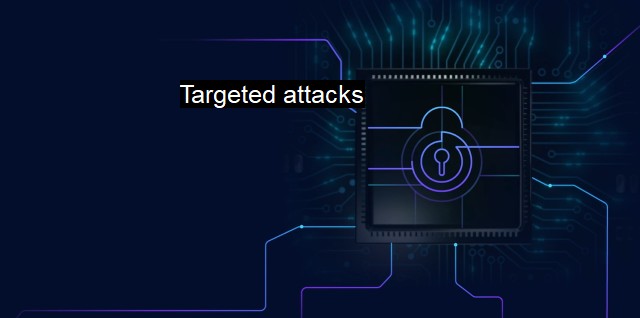What are Targeted attacks?
Targeted Attacks: Recognizing the Evolving Strategies of Cybercriminals and the Need for Advanced Antivirus Defense
A "targeted attack" with refers to cyber-attacks that are specifically orchestrated against an entity or entities such as a business, nation-state, or person. Targeted attacks are carried out primarily by groups of skilled, often state-sponsored, hackers. Their goals often vary from corporate espionage and intellectual property theft to causing severe financial and reputational damage, or gathering politically sensitive information.Contrary to the broadly focused, generalised nature of most cyberattacks, which aim to hit as many people or organisations as possible in the hope of gaining some minimal profit from each, targeted attacks are focused and intricate operations designed to infiltrate a single, specific network or system. These attacks are often well thought out, with clear objectives and explicit targets. To accomplish their aims the perpetrators may utilise a wide range of strategies and tactics, often sophisticated in execution, including spear phishing, Advanced Persistent Threats (APTs), or Zero-Day exploits.
Spear phishing is one of the most prevalent techniques used in targeted attacks. It is a deceptive communication strategy typically dwelled in fake emails that appear to come from a trusted source but are intended to induce targeted individuals into revealing confidential information. The information collected often includes usernames, passwords, and credit card details which enable the hackers to gain unauthorised access to systems, accounts, and even entire networks.
Advanced Persistent Threats (APTs) form another common tactic in the repertoire of targeted attack strategies. In contrast to spear phishing attacks that generally focus on acquiring confidential information directly, APTs generally deploy malware to infiltrate systems and networks, then lie dormant while covertly gathering the desired data. They can remain undetected within the target system for an extended period, siphoning off valuable information and causing immense damage.
Zero-Day exploits, these are cyber threats where the attacker exploits previously undiscovered vulnerabilities in the software, meaning that the attack happens on “day zero” of the vulnerability being known. Because these vulnerabilities are unknown to the vendor, the software creators won’t have had any opportunity to develop and distribute a patch for the issue, making Zero-Day exploits very hard to defend against.
Targeted attacks present an enduring security risk, particularly due to their evolving sophistication, the caliber of perpetrators behind them, and growing potential rewards at stake for the attackers. such attacks, despite their complexity and potential impacts, are not invincible or unavoidable. Depending on their level of complexity, a variety of cybersecurity measures may significantly reduce the risk they pose.
For eliminating or reducing phishing attacks, educating the employees about the risks and the nature of spear-phishing emails can prove effective. With advanced security systems, organisations can limit access to sensitive information and safeguard against potential targets of APTs. To counteract Zero-Day exploits, one option is to use specialised security software that utilises behavioural analysis to identify unusual activity on the network, signifying presence of a potential Zero-Day exploit.
Targeted attacks pose serious threats in today's digitally dependent world, particularly for industries and organisations that house sensitive, valuable data. Therefore, one must underscore the importance of robust, adaptive cybersecurity and antivirus measures that can proactively neutralize threats, protect valuable data, and maintain the security and integrity of systems and network. The multiple layers of protection that can be achieved through a combination of advanced technology, up-to-date threat intelligence, security awareness training, and rigorous cybersecurity policies is the most capable defense against the risk of targeted attacks.

Targeted attacks FAQs
What are targeted attacks?
Targeted attacks are sophisticated cyber threats that are specifically designed to exploit vulnerabilities in a particular organization, industry, or individual. These attacks are different from generic, mass-scale attacks and are often carried out by skilled and well-funded attackers who have a specific target in mind.How do targeted attacks differ from traditional cyber threats?
Targeted attacks are more complex and advanced than traditional cyber threats. These attacks are tailored to specific targets and use a combination of techniques such as social engineering, spear phishing, and malware to penetrate an organization's defenses. Traditional cyber threats, on the other hand, usually target a wide range of victims and rely on generalized attack methods.What are the risks of targeted attacks?
Targeted attacks pose a significant risk to organizations and individuals. These attacks can result in data theft, financial loss, reputational damage, and even physical harm in some cases. Targeted attacks can also compromise an organization's critical infrastructure and disrupt its operations.How can organizations protect themselves against targeted attacks?
Organizations can protect themselves against targeted attacks by implementing robust cybersecurity measures such as firewalls, antivirus software, and intrusion detection systems. They can also conduct regular security audits, provide employee cybersecurity awareness training, and practice incident response planning. It is important for organizations to stay up to date with the latest threats and vulnerabilities and be prepared to respond quickly in case of an attack.| | A | | | B | | | C | | | D | | | E | | | F | | | G | | | H | | | I | | | J | | | K | | | L | | | M | |
| | N | | | O | | | P | | | Q | | | R | | | S | | | T | | | U | | | V | | | W | | | X | | | Y | | | Z | |
| | 1 | | | 2 | | | 3 | | | 4 | | | 7 | | | 8 | | |||||||